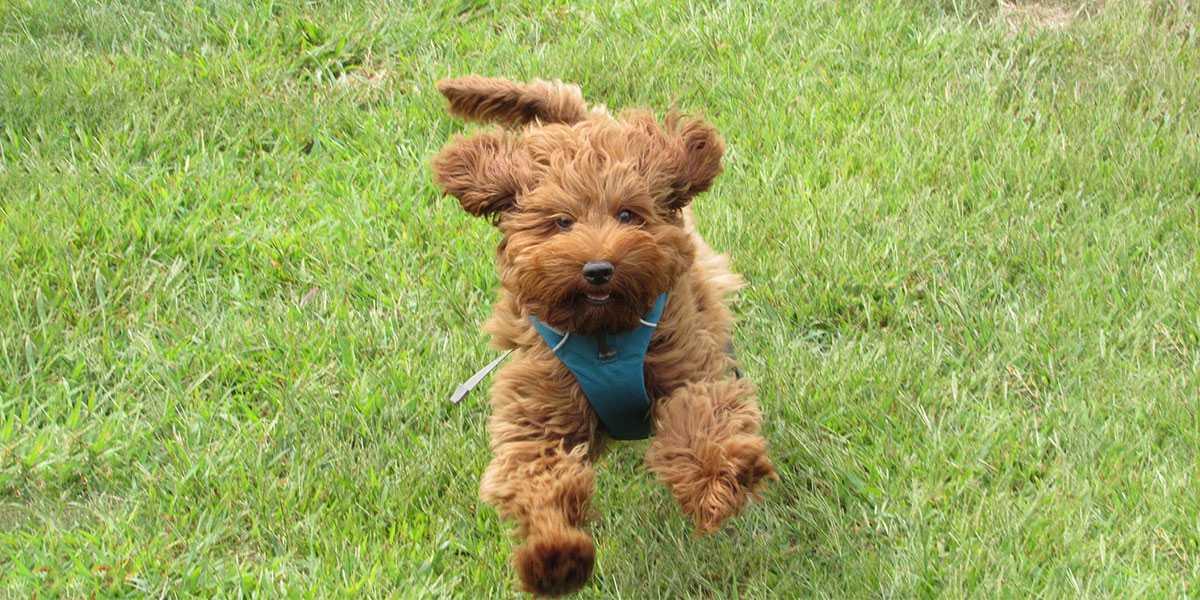Taking too long? Close loading screen.

August 12th
Cats and dogs don’t have to be mortal enemies. Many kittens and puppies live in harmony, and some even become best friends.
But it may take some work to teach your puppy to get along with your cat. Dogs and cats have a different idea of what counts as play, and the youthful energy of a puppy can irritate cats.
Some dog breeds also have instincts that make them chase after small animals, including cats. Although this chasing is often playful, your cat won’t see it that way. And in other cases, dogs may see cats as food, which can cause quite a few issues in your neighborhood.
Fortunately, there are a few easy tricks you can teach your dog to respect your cat’s boundaries and help the two of them get along.
Dogs learn quickly, and can be trained to do just about anything. You can take advantage of their intelligence to train them to tolerate cats and avoid chasing them.
The most effective way of training your dog to stay calm around cats is with treats. You can use the same time of reward system that you would use to teach your dog just about any other command.
Start by keeping your dog on a leash. You won’t want them to bolt after your cat as soon as they walk into the room. If your dog tries to run after the cat, give them a quick tug and make sure that they stay in place.
Make sure you have some of your dog’s favorite treats on hand. Keep your cat in the room without and let them roam free. Your dog may react strongly to the cat at first, but try to keep them from lunging.
You’re trying to teach your dog that whenever the cat is around, they’ll get a treat. Slowly, your dog will associate cats with rewards, and will stop chasing them.
This process can take a while, so don’t worry if your dog continues to go after the cat. Make sure that they cannot reach your cat, and separate them if your dog starts barking loudly.
If your dog is having behavioral issues, you may have to separate them from a dog. Use the method discussed above, but keep your cat in a carrier instead of letting them roam free.
Move the carrier towards your dog and give them a treat. Ask them to perform basic commands, such as sit or stay, and give them a treat when they behave.
Give your dog the best treats when they ignore or look away from the cat. Slowly, your dog will learn that a cat’s presence means they’ll be getting a treat.
As your dog gets used to the presence of the cat, you can consider training without a carrier. You should still keep your dog on a leash until you learn how they respond when the cat runs free.
If your dog is still having issues around cats, you may have to put a muzzle on them while training. This will keep your cat safe and prevent them from biting.
It can take a while for dogs to adjust to muzzles. To make it easier for them, let them get used to the smell of the muzzle before you put it on.
Wave it in front of their nose, gently petting them. You can also put a treat inside the muzzle and let them smell it. Once you’ve waived the muzzle in front of their nose a few times, give them a treat.
You should do this a few times before you actually put the muzzle on. By the time they actually wear the muzzle, they’ll be much less afraid and less likely to paw at it.
Dogs respond strongly to smells, and use them to recognize other animals. You can use this to your advantage when introducing a cat to your dog.
If your dog gets to know your cat through their smell, they may be less likely to lunged at them or try to chase them.
Take a blanket that your cat regularly uses and give it to your dog. Do this frequently so that your dog gets to know the smell well. When they finally do meet the cat in person, they’ll feel like they’re meeting an old friend.
It can take quite a while for your dog to get used to a cat. Try to stay patient and not rush things, as this can quickly undo any progress you’ve made.
As your dog gets used to the training, you can try out a few sessions without a leash. Just make sure that your cat has plenty of escape routes in case your dog chooses to chase them.
Try not to leave your dog and cat unsupervised for a while, even if they are doing well in training. It only takes one chase for your dog to scare away the cat and make coexistence difficult.
If your dog is still having issues around cats, you may need to reach out to a trainer. They can give you more structured training methods that can help prevent your dog from chasing.
Even with the right training, some dogs may never be able to suppress their natural instincts to chase. In these cases, you may need to keep your dog and cat separate, or have your dog on a leash.
If you’re searching for the perfect dog, look no further.With our puppy finder, with some of the best breeders and companies around so that you can find the dog of your dreams.
We only work with breeders and companies that follow strict ethical standards. That means that none of their dogs ever come from puppy mills or backyard breeders.
Find the Perfect Puppy